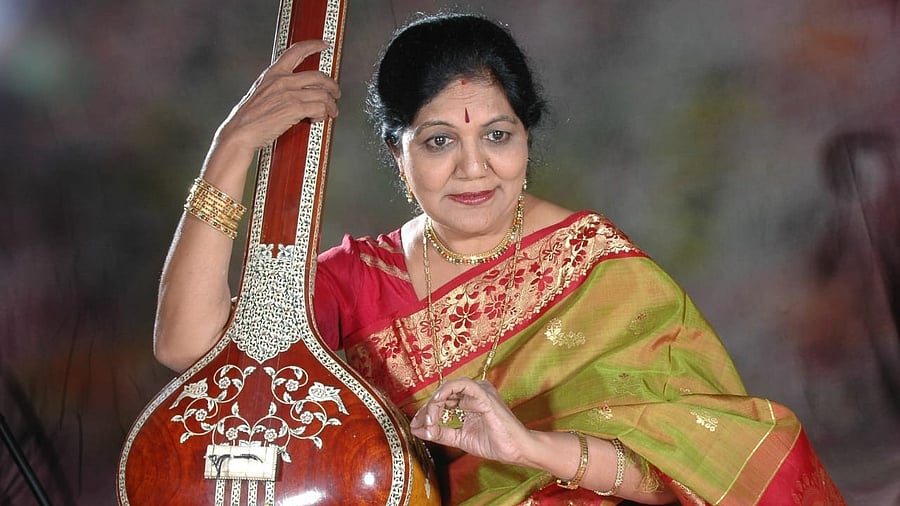
Nagamani Srinath
Credit: Special Arrangement
G N Nagamani Srinath is the latest recipient of the Ganayogi Panchakshari Gavai National Award, presented by the Karnataka government. She started her music journey when she was five and performed a full-fledged concert at the age of nine. She continued her music lessons under the tutelage of Karnatic vocalist Ramnad Krishnan in Madras (now Chennai).
Nagamani has been practising music for about 65 years now. She has added many feathers to her illustrious hat — she is a teacher, educator, composer, organiser, administrator, director and philanthropist. She has bagged several top honours. The Central Sangeetha Nataka Academy Puraskar, Rajyotsava Prashasti (Karnataka State Award), Chowdiah National Award, Karnataka Kalashree, and the Best Teacher Award from the state government are a few of them.
An unstoppable Nagamani is currently running an online Gurukul on YouTube. In a conversation with Showtime, she talks about online teaching, the Karnatic music scene, and how Kannada compositions are taking centre stage in concerts.
You run an online Gurukul. How has the process of learning changed over the years?
When I started touring the US and other countries, I came across many people who had the urge to learn music but didn’t have a teacher or proper guidance there. So when technology has advanced in all forms now, I thought ‘Why not a digital Gurukul?’ I compiled Karnatic music teaching material, titled as
‘Gurukula’ (audio visual) and ‘Sangeeta Sandhane’ (audio). These cover everything from basic to advanced lessons and are taught along the lines of the Gurukul model. I created 500 hours of teaching material. It was earlier available on DVDs. Now I have uploaded them on my online Gurukul on YouTube.
Some schools in Germany use it as a part of their curriculum.
What are your views on the current Karnatic music scene?
Karnatic music is a culture and has a long history. As times change, our taste in music and art changes too. Change is constant and important, just like a river that flows over great distances but its source should not be forgotten. While we adapt to modern culture, we must still align with our culture and roots. Having said this, there are brilliant artistes in Karnatic music today and youngsters doing exceptional work. As renowned poet DVG says, “Haleya beru, hosa chiguru” (old roots with fresh sprouts), we’re proud of our new generation of Karnatic singers.
What kind of support is the Karnataka government giving to Karnatic musicians?
No other government in India supports art, culture and literature like the Karnataka government does — in terms of award categories and prize money. We must be all proud of this. But, for the past few years, the government has not provided adequate representation to Hindustani and Karnatic classical music in the Rajyotsava awards. The Rajyotsava award has the potential to honour musicians who have put in five to six decades of work. This is one thing all classical musicians are upset about.
What can be done to promote Kannada compositions of Karnatic music?
Tyagaraja, Muthuswami Dikshitar and Syama Sastri are the foundation of Karnatic classical music. Purandaradasa was their teacher (guru) who composed in Kannada. The trio composed only in Telugu and Sanskrit. Coming to Kannada compositions, vocalists sing the Kannada compositions of the Haridasas and the vachanakaras only towards the end of their concerts. Now, slowly, people have started singing these Kannada compositions in the main portion of the concerts as well. Some concerts are even fully based on Kannada compositions. An awareness about the importance of Kannada compositions has been created among Karnatic musicians today. So, Haridasa sahitya and vachana sahitya have gained prominence.